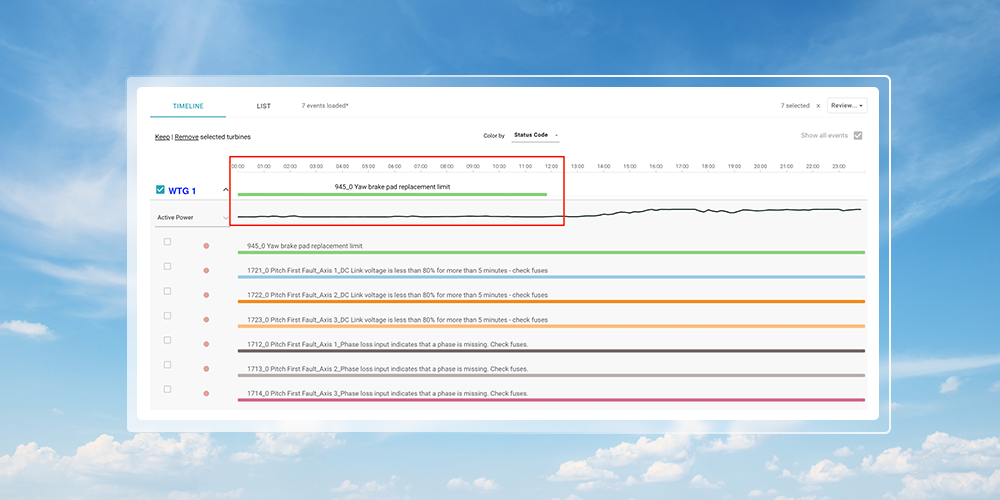Accurately interpreting turbine event data is critical to identifying when, and categorizing why, wind turbines are not operating. It can impact the accuracy of reporting, skew benchmarking data, obscure true issues and areas of loss, and impact a farm’s valuation. At Clir, events feed into many of our tools, including our waterfall loss categories, reporting functionality and energy yield assessments. Accurately labelled events improve overall data quality and integrity, and we rely on turbine event processing algorithms to provide this accuracy.
Approaching GE events
An issue in the renewable energy industry is that event data is not standardized between manufacturers. For owners, this can make it difficult to compare performance across assets and farms in their portfolio. The International Electrotechnical Commission (IEC) has its own standards that determine how to classify outages, which provides some consistency. Clir’s data model and our turbine event processing algorithms augment event data to enable consistent IEC classification for turbine outages.
Processing turbine event data from different OEMs — accurately, robustly and at scale — is valuable. Within the industry, periods of missing turbine event data and missing individual status message start and end times are very common. Furthermore, OEM-specific event data can present unique challenges. GE turbine event data, for example, commonly triggers a large number of individual status messages during single downtime events. These challenges can lead to difficulty interpreting and accurately categorizing reasons for turbine downtime.
Outages are typically represented by a single start time, end time and IEC classification. This ensures clarity on lost energy throughout the Clir platform and the client’s portfolio.
Benefits of improved downtime labelling
Clir’s data model ingests, standardizes and enhances millions of renewable energy data points. With clean data and improved data transparency, clients rely on our data for efficient, industry-leading outcomes. This includes enabling flexible visualizations and accurate analytics to understand performance and losses.
Our new turbine event processing algorithm refines GE event data to improve how it’s presented to clients in our web app. Using proprietary logic, we can determine the correct start time, end time and IEC event allocation of GE events to correctly categorize downtime. Each GE downtime event is ingested and overlaid over SCADA events, which then serve as the primary event, used to classify the periods of downtime. This enables accurate and consistent identification and labelling of turbine outages.
Accurate event data improves confidence in data and results, and can drastically reduce the need for manual error code reconciliation. It can be leveraged to:
- Develop more accurate energy yield analyses with accurate loss categories.
- Benchmark downtime, loss factors, or availability.
- Improve reliability and reporting.
Clir clients using GE turbines will now be able to rely on high-quality data, with outages correctly categorized at the IEC level. It will also improve how waterfall losses are categorized, leading to greater confidence and accuracy in reports. Instead of extensive manual manipulation, Clir clients can continue to rely on us to provide accurate and better data.







